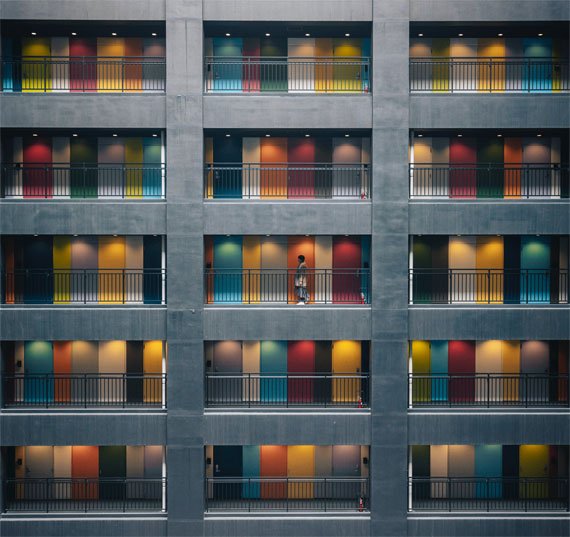Photography, as an art, requires an eye for detail and an understanding of the numerous principles that guide this form of visual expression. Among these principles is the concept of symmetry, a powerful tool that can transform your images into captivating masterpieces. This blog post will delve into the world of symmetry in photography and the types of symmetry that can be applied in various compositions.
Relevant note: deal ending soon for the Photo Composition Cheat Sheets
Understanding Symmetry
Symmetry refers to a sense of harmonious and beautiful proportion and balance. In photography, this means creating an image that can be divided into two parts that are mirror images of each other, either horizontally, vertically, or diagonally. The symmetry can be perfect, with each side being a precise mirror image, or it can be approximate, where the two halves are similar but not identical.

Photo captured by jet dela cruz
Symmetry is not just about mirroring; it’s about creating balance, harmony, and a sense of order in an image. It can add depth, highlight specific parts of the composition, or create a compelling visual rhythm.
Types of Symmetry in Photography
There are several types of symmetry that photographers can use to enhance their images:
Vertical Symmetry: This is the most common type of symmetry in photography. Vertical symmetry involves splitting an image down the middle vertically, so that each side mirrors the other. Buildings, trees, and human beings are all examples of subjects that often exhibit vertical symmetry.
Horizontal Symmetry: Horizontal symmetry involves dividing an image into two equal halves along a horizontal axis. Reflections in bodies of water, landscapes with horizons, and sunsets are examples of scenes that can exhibit horizontal symmetry.
Radial Symmetry: This is where the elements of an image radiate from a central point, creating a circular symmetry. Examples of this can be found in nature, such as flowers or a spiral seashell, or man-made objects like a wheel or a clock.
Reflective Symmetry: Reflective symmetry is seen when one half of the image reflects the other half. This type of symmetry can be vertical or horizontal, and is often found in architectural photography or in nature with bodies of water reflecting the landscape.
Rotational Symmetry: In rotational symmetry, the image looks the same even after being rotated by a certain degree. This type of symmetry is often found in patterned subjects, such as kaleidoscope images or snowflakes.
Tips for Using Symmetry in Photography Composition
Seek Symmetry in Everyday Life: One of the keys to using symmetry in your photography is to start seeing it in your everyday life. Look for patterns, reflections, and structures that offer symmetrical elements.
Use Symmetry to Guide the Viewer’s Eye: Symmetry can be a powerful tool for guiding the viewer’s eye towards the center of an image or to a particular focal point.
Experiment with Balance: Not all images have to be perfectly symmetrical. Playing with asymmetry can lead to unique and engaging compositions.
Break the Symmetry: Perfect symmetry can sometimes lead to monotonous compositions. Breaking the symmetry by introducing an unexpected element can often result in a more dynamic and engaging photo.
Use Your Camera’s Grid: Most cameras have an inbuilt grid that can help you align the elements of your image and create a symmetrical composition. Use this tool to your advantage.

Photo captured by Pete Alexopoulos
Symmetry in photography, when used effectively, can create compelling and visually pleasing compositions. It provides a sense of balance, stability, and harmony, which draws viewers into the photo. However, remember that the rules of composition, including symmetry, are not set in stone. They should serve as a guideline rather than a strict rule, allowing you to experiment and develop your unique photographic style.
In conclusion, understanding and mastering the art of symmetry can elevate your photography to new levels. So, keep your eyes open for symmetrical opportunities and let your creativity flow.
For Further Training on Composition:
Do you ever have trouble remembering all the elements of composition? These new Composition Cheat Sheets have you covered. With clear, concise information on all the essential elements of composition, you’ll never be unprepared again. They are currently 81% off today if you want to check them out.
The perfect companion for any photographer. Print one out whenever you need it. These cheat sheets consolidate crucial composition-related information, allowing you to concentrate on what truly matters – composing striking photographs.
Deal ending soon: The Composition Cheat Sheets at 81% Off
Like This Article?
Don't Miss The Next One!
Join over 100,000 photographers of all experience levels who receive our free photography tips and articles to stay current:








Leave a Reply